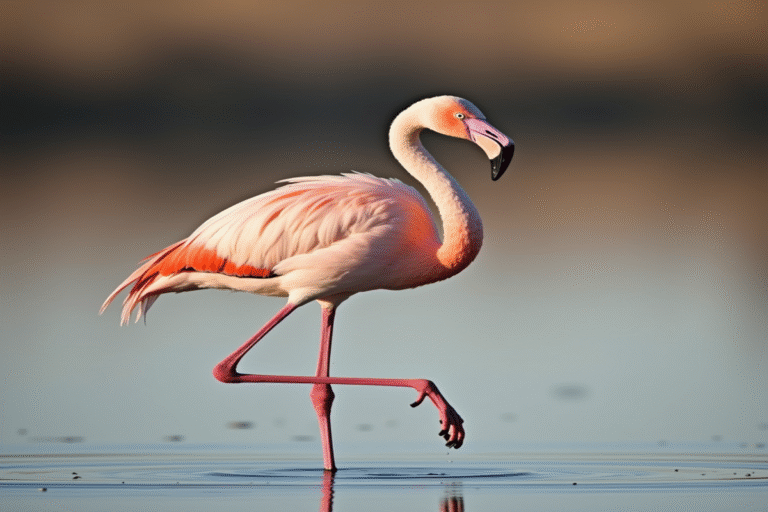Have you ever wondered how those vibrant pink birds manage to stand so effortlessly on a single spindly leg? This iconic flamingo pose isn’t just for show – it’s a fascinating example of evolutionary adaptation backed by surprising scientific discoveries.
The Mystery of the One-Legged Stance
Flamingos spend hours each day balancing on a single leg, a behavior that has puzzled scientists for decades. While many birds occasionally rest on one leg, flamingos take this behavior to extraordinary levels, often maintaining perfect balance even while sleeping.
Surprisingly, flamingos appear more stable on one leg than on two. Research published in Biology Letters in 2017 showed that even flamingo cadavers could balance on one leg without any muscular activity. This led to a breakthrough discovery: flamingos use a passive gravitational stay mechanism—a natural biomechanical locking system in their legs.
The Science Behind Their Balancing Act
Unlike humans, who must constantly engage muscles to stand upright, flamingos have leg anatomy that allows them to lock their joints in place. When standing on one leg, the bird’s weight triggers this mechanism, creating a stable position that requires almost no muscular effort.
This adaptation involves:
- A hip joint structure that automatically locks in place
- Specialized tendons and ligaments that hold the position without muscle work
- Lightweight leg bones that help reduce energy use
Why Do Flamingos Stand on One Leg?
Scientists have identified two main advantages to this unusual behavior:
Energy Conservation
Standing on one leg actually uses less energy than standing on both. With their passive locking mechanism, flamingos can fully relax their muscles while still remaining upright—an energy-saving adaptation for spending long hours in shallow water.
Thermoregulation
Flamingos often feed in cool water, and their unfeathered legs lose body heat quickly. By tucking one leg up against their body, flamingos reduce heat loss. Research published in Zoo Biology found that flamingos stand on one leg even more often in colder water, supporting this heat-conservation theory.
Balancing While Asleep
Even more impressive is their ability to hold this posture while sleeping. Flamingos enter a state called “unihemispheric slow-wave sleep,” where one side of the brain stays alert while the other sleeps. This allows them to stand on one leg and remain balanced, even when half-asleep—an ability humans could hardly imagine mastering.
The next time you see a flamingo’s graceful one-legged stance, remember you’re witnessing an evolutionary marvel—a clear example of how nature shapes perfect adaptations for survival.





